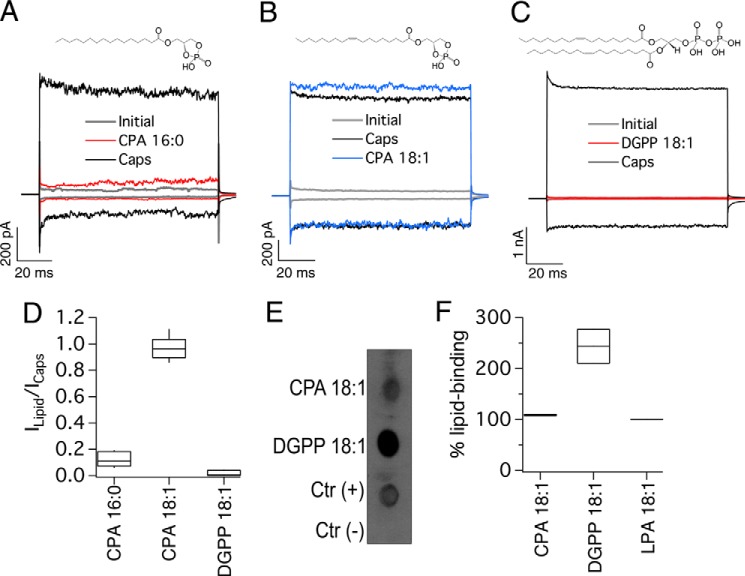FIGURE 2.
Effects of cyclic phosphates and DGPP on TRPV1 function. All representative traces were obtained at −120 and +120 mV. A, initially (leak, gray), after 4 μm capsaicin (Caps, black), and after wash of capsaicin and with 5 μm CPA 16:0 for 5 min (red). Currents were obtained from inside-out membrane patches expressing TRPV1. B, gray is the initial current, black is 4 μm capsaicin (Caps), and blue is after 5 min of 5 μm CPA 18:1. C, gray is the initial current; black is 4 μm capsaicin, and red is after 5 min of 5 μm DGPP 18:1. The chemical structures of each lipid used are shown above the current traces. D, horizontal line within each box indicates the median; boxes show the 25th and 75th percentiles, and whiskers show the 5th and 95th percentiles of the data obtained at +120 mV and normalized to activation by 4 μm capsaicin. Capsaicin (n = 5 for CPA 16:0, 6 for CPA 18:1, and 6 for DGPP 18:1). E, overlay assay shows that CPA18:1 and DGPP 18:1 bind to wild type (WT) TRPV1. DMEM with 1% fatty acid-free BSA was used as a negative control indicated as Ctr(−). F, densitometry was performed for the different lipid spots and normalized with respect to the positive control (LPA 18:1). Data are shown as in D (n = 2).

